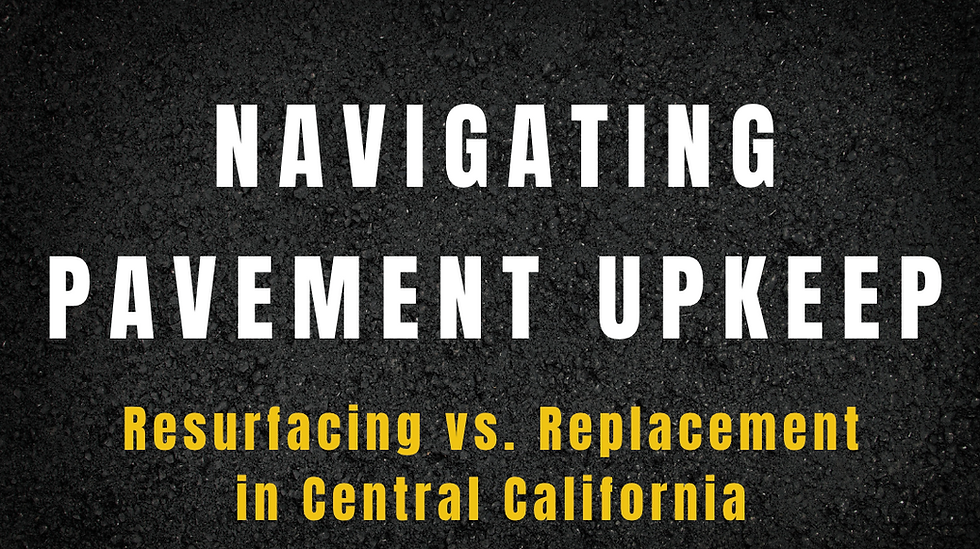The Dangers of Improper Asphalt Drainage: A Critical Overview
- Central Coast Paving
- Sep 1, 2023
- 2 min read

Water and asphalt, when improperly managed, can be a damaging combination. Just as a home needs a good roof to prevent water infiltration, your asphalt pavement requires proper drainage to ensure its longevity and function. Failing to account for effective water runoff can pose serious challenges and risks. Let's explore the dangers of improper asphalt drainage and the steps to mitigate them.
Damage Caused from Poor Drainage
1. Potholes and Rutting:
Water, when trapped under the surface of the asphalt, can erode the foundation. During colder months, this trapped water can freeze and expand, then thaw and contract, leading to the formation of potholes and ruts, posing both safety risks and structural concerns.
2. Cracking:
Water infiltration can cause the asphalt to lose its flexibility, leading to cracks. These cracks, over time, can grow and multiply, resulting in a spider-webbed surface that's both unsightly and unsafe.
3. Reduced Lifespan:
Consistent water damage can dramatically shorten the lifespan of your asphalt, making frequent repairs or replacements necessary. This not only disrupts usability but also becomes a costly affair.
4. Foundation Erosion:
Without proper drainage, water can wash away the base materials underneath the asphalt, compromising its structural integrity. This foundation erosion can lead to widespread failures across the paved surface.
5. Slip Hazards:
Pooling water on the asphalt surface can create potential slip hazards, especially during colder months when these pools can freeze over.
6. Aesthetic Degradation:
Beyond structural issues, stagnant water can lead to unsightly water stains, mold growth, and an overall diminished appearance of the asphalt surface.
How to Avoid Damage from Drainage?
1. Proper Sloping:
Ensure your asphalt surface is designed with a slight slope, directing water towards designated drainage areas. This gradient should be subtle but effective in guiding water away.
2. Installation of Drains:
Incorporate strategically placed drains, like French drains or trench drains, to help collect and redirect water efficiently.
3. Regular Maintenance:
Inspect your asphalt regularly for signs of water damage. Addressing small issues promptly can prevent larger, more costly problems down the road.
4. Sealcoating:
Consider applying a quality sealcoat to the asphalt surface. Sealcoating not only protects against UV rays and oxidation but also offers an additional layer of defense against water penetration.
5. Quality Construction:
Hire experienced professionals who understand the importance of drainage in asphalt paving. Proper construction from the outset can prevent many drainage-related issues.
6. Address Surrounding Landscaping:
Ensure that landscaping around the asphalt does not direct water towards it. Instead, design the landscape to work in harmony with the pavement's drainage system.
Conclusion
Proper drainage is not just a feature of quality asphalt paving—it's a requirement. The dangers posed by poor drainage range from minor aesthetic issues to major structural failures. By understanding these risks and implementing measures to ensure effective drainage, property owners can protect their investment, ensure user safety, and extend the life of their asphalt surfaces. Remember, the key is not just to pave but to pave with foresight and care. Contact Central Coast Paving at (805) 665-3292 to ensure proper drainage in your next pavement project.




Comments